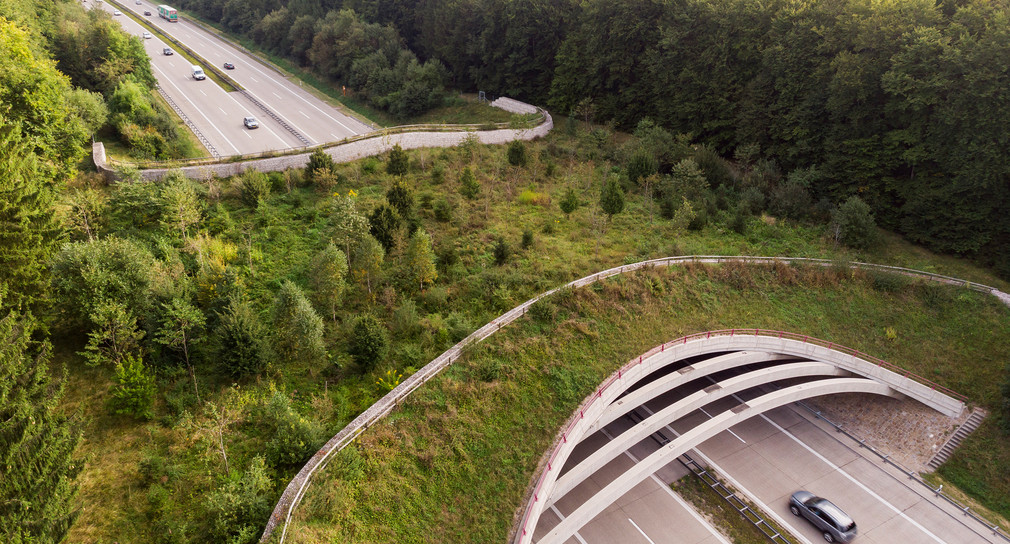Our many traffic routes – including motorways, federal roads – state roads and district roads, help us to get from A to B quickly. Yet these roads, as well as railways and residential areas have a profound impact on the habitat of many animals and plants. In order to reconnect the habitats and territories of the animals and plants affected and to maintain and strengthen biological diversity, the Ministry of Transport has implemented a number of measures.
The ministry funds and supports the environmentally friendly planning, construction and operation of all transport routes. When planning streets in particular, the Ministry of Transport attaches special importance to ensuring that the standards are environmentally compatible.
Reconnecting habitats and improving roadside greenery
When constructing new and expanding existing traffic routes, special attention must be paid to animal bridges and other wildlife crossings in order to link natural habitats and national wild animal corridors. In the existing road network, habitats are also reconnected, both by building new crossways and by optimizing existing ones.
In Baden-Württemberg there are around 27,000 hectares of grassland and woodland areas alongside its roads, otherwise known as roadside greenery. If these areas are created and maintained in an optimal way, they can play an important role in preserving biological diversity. The German Ministry of Transport has prepared a guideline for the road construction authority on how to increase biodiversity and maintain roadside greenery in an ecologically friendly manner. For example, it describes how much can be done to help preserve threatened species by carefully scheduling the management dates of the various areas. Great importance is also attached to the use of indigenous and regional plants and seeds.
Strengthening biological diversity
In order to counter the accelerating decline in animal and plant species, the Ministry of Transport has taken part in setting up a special two-year program to strengthen biological diversity in December 2017. The measures focus on increasing biodiversity of roadside greenery as well reconnecting habitats especially for amphibians.
With the launching of a model project, the Ministry of Transport wants to reduce landscaping costs and, at the same time, enhance the biological diversity of roadside greenery. During this three-year project, selected slope sections along roads in seven administrative districts are mown with the cuttings removed. Additional areas of perennial flowering plants are created at suitable locations. Among other things, this project will investigate whether the initial costs for these measures will pay off in the medium term and whether landscaping costs will indeed be reduced in the long term while making a major contribution to maintaining and promoting biological diversity.
Nature and landscape are protected by law and must be preserved as the basis of life and as a valuable resource for humans and animals.

